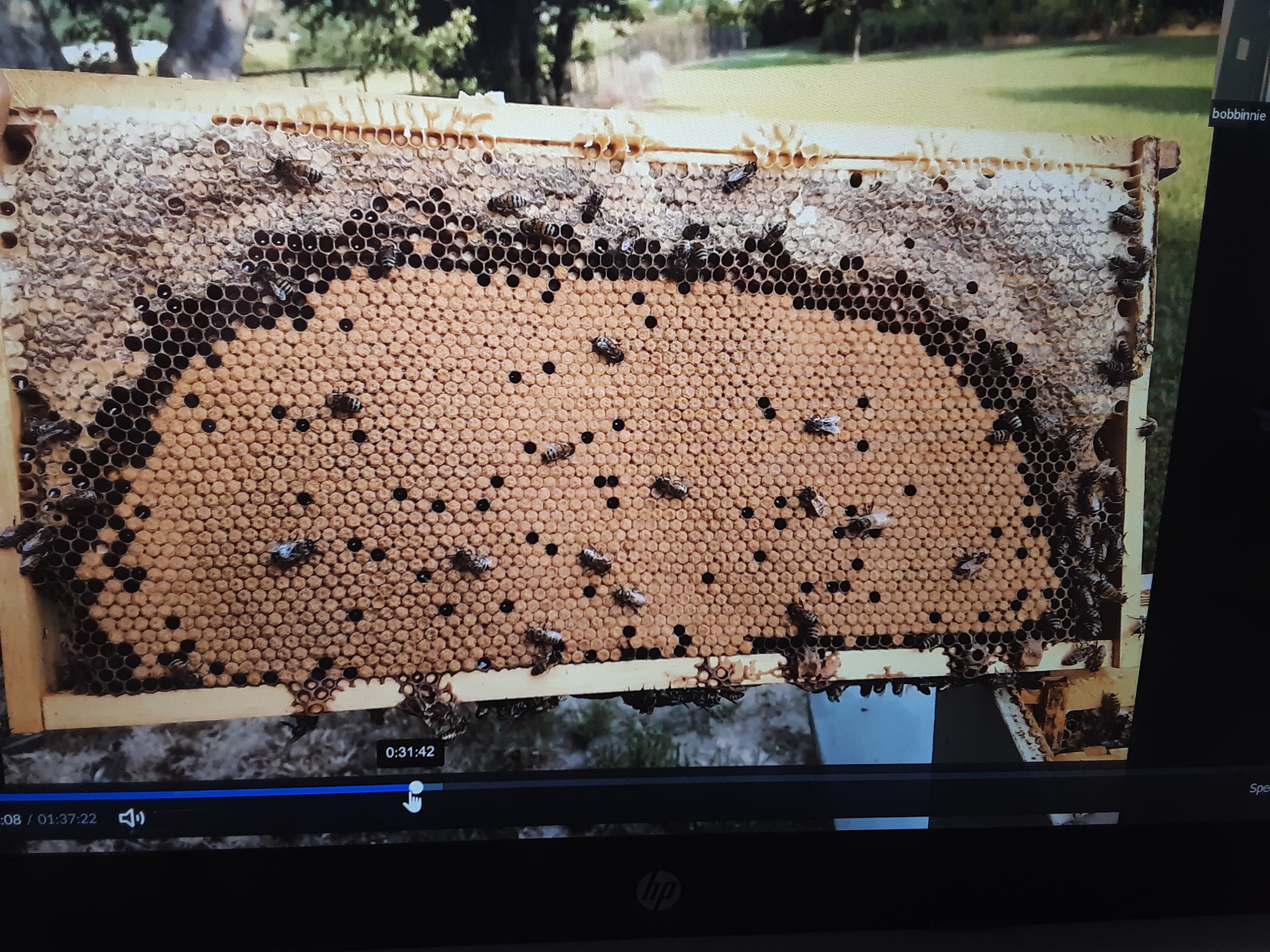Cells with a blackened cover below the cell rim.
Honey bees "entomb" cells of contaminated pollen to protect the hive against pesticides. By sealing off cells filled with contaminated pollen, bees appear to be attempting to protect the rest of the hive. "Entombed" pollen cells are identified as having sunken, wax-covered cells amid ‘normal’ uncapped cells; the cell covering is not the "typical" waxen cappingcapping:
the covering that bees add over comb cells containing fully ripened honey or to cap brood that has reached the pupal stage; bee bread cells are not capped seen in honey or brood cells. Propolis as well as beeswax may be used to seal cells.
seen in honey or brood cells. Propolis as well as beeswax may be used to seal cells.
If many entombed cells are found it would be best to remove and cull the frame.
pesticide poisoning damage
vanEngelsdorp D, et al. 2009. "Entombed Pollen": A new condition in honey bee colonies associated with increased risk of colony mortality. Journal of Invertebrate Pathology. 101(2):147-9. https://www.sciencedirect.com/science/article/pii/S002220110900055X?via%3Dihub